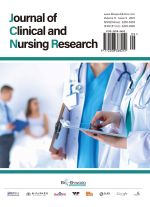Clinical Significance of Real-Time Two-Dimensional Shear Wave Elastography (SWE) in Assessing Liver Parenchymal Stiffness for Predicting the Severity of Non-Alcoholic Fatty Liver Disease (NAFLD)
Abstract
Objective: To evaluate the value of real-time two-dimensional shear wave elastography (SWE) in predicting liver parenchymal stiffness in non-alcoholic fatty liver disease (NAFLD). Methods: A total of 200 NAFLD patients (70 in the mild group, 70 in the moderate group, and 60 in the severe group) and 60 healthy individuals (control group) who visited the hospital from December 2023 to December 2024 underwent real-time two-dimensional SWE examinations. Results: Except for high-density lipoprotein, comparisons of body mass index and biochemical indicators showed that the severe group > moderate group > mild group > control group, with P < 0.05. Comparisons of liver stiffness values also showed that the severe group > moderate group > mild group > control group, with P < 0.05. Pearson correlation analysis revealed a positive correlation between liver stiffness values and body mass index, triglycerides, total cholesterol, low-density lipoprotein, fasting blood glucose, and glycosylated hemoglobin. Analysis of the ROC curve indicated that the AUC, standard deviation, and P-value for liver stiffness values were 0.901, 0.025, and 0.01, respectively, suggesting that liver stiffness values can predict the severity of NAFLD. Conclusion: The real-time two-dimensional shear wave elastography (SWE) technique for diagnosing NAFLD can differentiate between NAFLD patients and healthy individuals, as well as determine liver parenchymal stiffness, thereby assisting physicians in quantifying the degree of fatty liver.
References
Wu B, Xu X, Gu X, et al., 2024, Correlation Analysis of Liver Stiffness Measured by ElastPQ Elastography Technology With Liver Fibrosis Scores and FIB-4 Index in the Diagnosis of Fatty Liver. Liver, 29(1): 73–76.
Yan J, 2018, Interpretation of the Guidelines for the Prevention and Treatment of Non-Alcoholic Fatty Liver Disease (2018 Updated Edition). Doctor Online, 8(13): 1.
Zheng Y, 2024, Research on the Efficacy of Ultrasound Transient Elastography Parameters in Assessing Liver Fibrosis in Patients With Hepatitis B Complicated by Non-Alcoholic Fatty Liver Disease. Practical Medical Imaging Journal, 25(3): 231–234.
Gu Y, Fan C, Wang H, 2024, Application of Sound Speed Matching Technology and Shear Wave Elastography in Non-Alcoholic Fatty Liver Disease and Evaluation of Liver Cirrhosis. Liver, 29(11): 1338–1341+1357.
Tang Y, Liang X, Cheng X, et al., 2022, Comparative Study of Different Ultrasound Elastography Techniques on Liver Fibrosis in Non-Alcoholic Fatty Liver Disease. Journal of Integrated Traditional Chinese and Western Medicine for Liver Diseases, 32(8): 722–725.
Wu L, Zhou H, Hao L, et al., 2023, Application Value of SWE Technology Combined With HSI Index in the Diagnosis of Non-Alcoholic Fatty Liver Disease. Clinical Journal of Digestive Diseases, 35(4): 259–263.
Chen L, Zhang X, Xu Q, 2022, Application Value of Shear Wave Elastography Technology in Screening High-Risk Populations for Non-Alcoholic Steatohepatitis. Chinese Journal of Gerontology, 42(11): 2702–2704.


